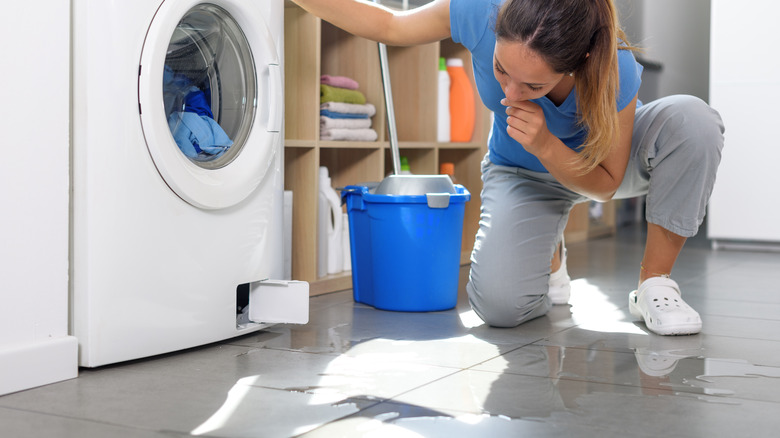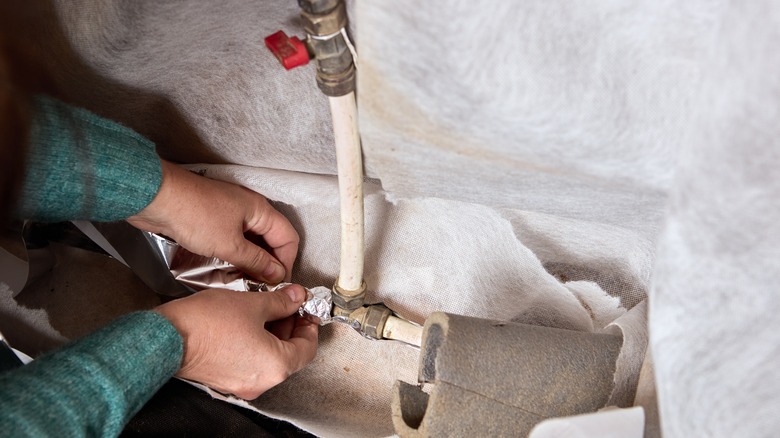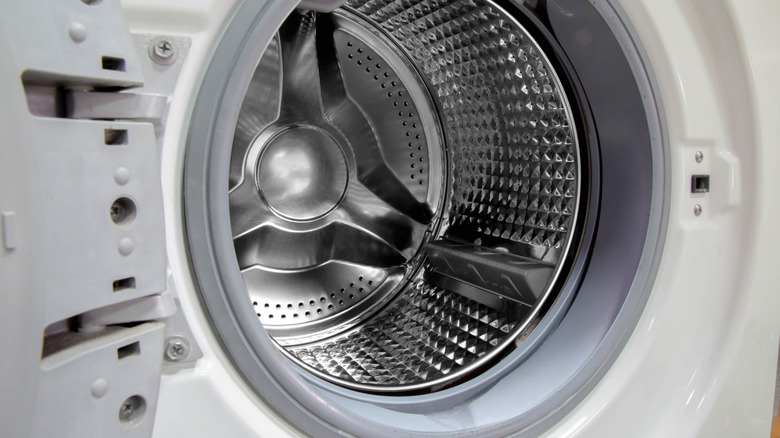How To Prevent Your Washing Machine From Freezing During Frigid Winters
When temperatures dip for a few days, it's possible for various water lines running through your home to freeze. With the washing machine, you may notice this only after you try to run the system and no water comes out. If you're really unlucky, the water in the inlet valve froze, too, and that means there could be an expensive repair on your hands. However, using a bit of antifreeze and insulation, you may be able to prevent your washing machine from freezing on very cold days.
In situations where the washing machine is located near the exterior walls of your home, or even in an uninsulated or unheated garage, cold temperatures can make it more susceptible to freezing. That means the water that sits in the lines leading to the washing machine could freeze, and in some cases, the water that's moved further into the system through the inlet valve is also at risk of freezing. As water freezes, it expands, and even a small amount of expansion in a tight space can significantly damage those lines. In some cases, this can cause significant internal and hard-to-repair damage to the washing machine. That's why, as a component of your washing machine maintenance, you should work to reduce this risk by preventing the water in those lines from dropping to dangerously low levels. There are several ways to do just that as you prep your home for cold weather.
Insulate your washing machine to minimize freezing
One of the prevention strategies for freezing washing machine pipes is to insulate them. Insulating the pipes minimizes the risk of freezing temperatures affecting the pipes, and it's typically an easy process for a DIYer. You can purchase snap-on or foam wrap-around insulation pieces that can be positioned along the majority of the exposed water line. Do this for any water lines you can see and access running to the washing machine. You'll find this type of water line insulation at most home improvement stores.
Other insulation products are available as well, including fiberglass pipe wrap and tape insulation. For a more extensive option with a better level of success in improving energy efficiency during the colder months, consider adding rigid foam insulation to the interior-facing exterior walls. While adding this type of wall insulation could seem like a big step, it's one of the most important investments you can make for all of the water lines and drains in your home's exposed areas. You can also add another layer of protection by keeping water out of these lines whenever possible. Turn off the water and disconnect it at the water supply line when you're not using it. That's the best level of support when temperatures are going to be very low for a period of time. It's possible to hook it back up whenever you need to run a load, disconnecting it afterward again.
Using antifreeze to help prevent frozen pipes
In some situations, the interior components are most at risk for freezing, including the inlet valve and pump, and these are much more difficult to repair. You can use a non-toxic antifreeze for a bit of help. You can find this type of product at your home improvement store. It's often recommended for marine or RV use. This method involves disconnecting the hot and cold water supply hoses from inside the system. Then, you'll turn the system to the fill position so it begins to pump. The antifreeze is added to the actual washing tub where you typically place clothing. After these steps, you'll plug in the system, turn it to the drain position, and let it run for just a few minutes. This method, recommended by 1-TOM-PLUMBER, will push the antifreeze through the inner working components of the machine, helping to prevent the onset of freezing once temperatures drop.
After those steps, you'll need to reconnect the water lines. It's a good idea to flush the pipes and hoses before actually reconnecting them. It's also a good idea to run blankets or old towels through the system on the first load since some residue may remain and could cause damage and discoloration to clothing. Once temperatures improve for the long term, consider doing a deep clean on your washing machine to keep it operating at its best.



